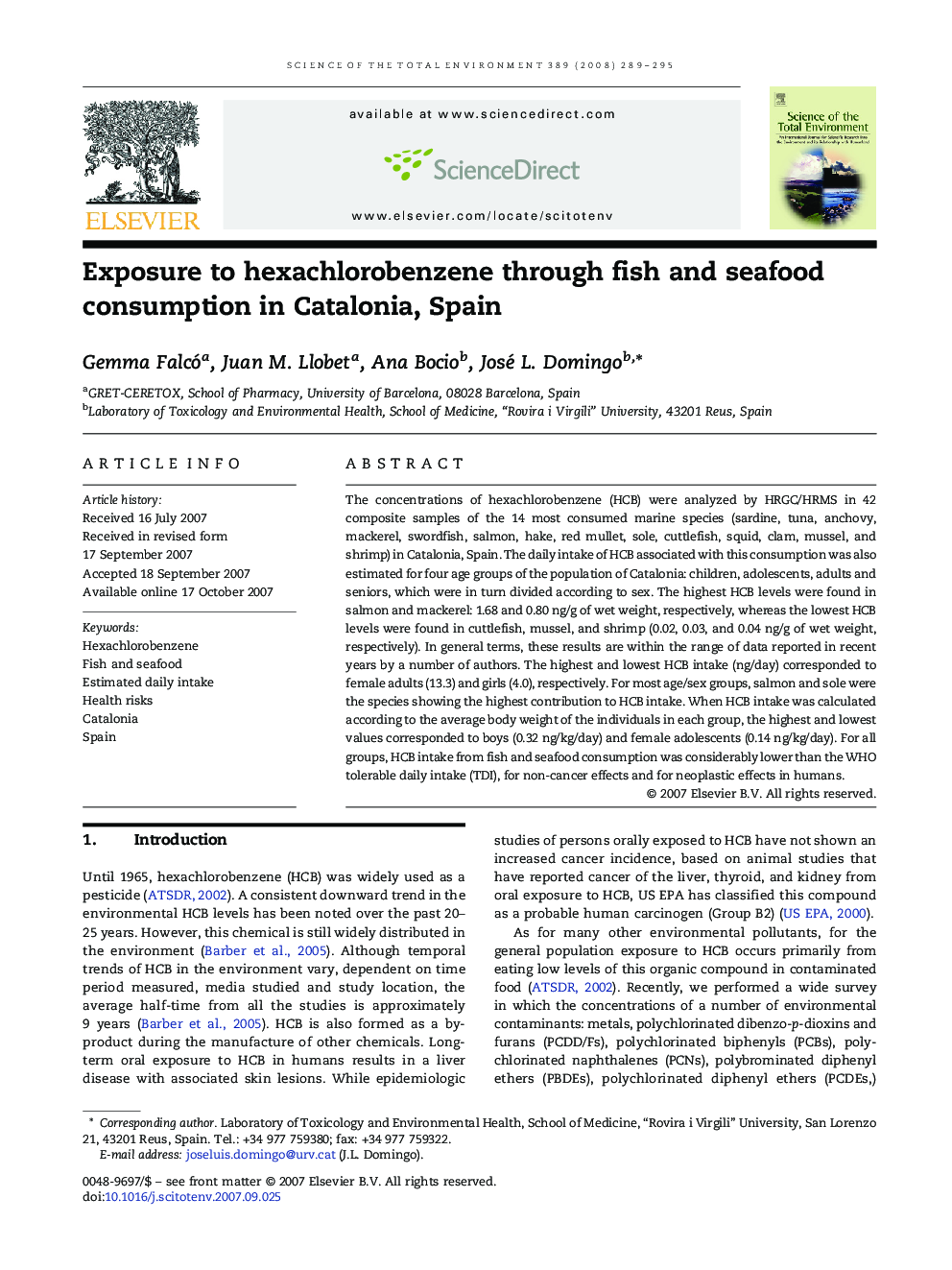| Article ID | Journal | Published Year | Pages | File Type |
|---|---|---|---|---|
| 4432713 | Science of The Total Environment | 2008 | 7 Pages |
Abstract
The concentrations of hexachlorobenzene (HCB) were analyzed by HRGC/HRMS in 42 composite samples of the 14 most consumed marine species (sardine, tuna, anchovy, mackerel, swordfish, salmon, hake, red mullet, sole, cuttlefish, squid, clam, mussel, and shrimp) in Catalonia, Spain. The daily intake of HCB associated with this consumption was also estimated for four age groups of the population of Catalonia: children, adolescents, adults and seniors, which were in turn divided according to sex. The highest HCB levels were found in salmon and mackerel: 1.68 and 0.80Â ng/g of wet weight, respectively, whereas the lowest HCB levels were found in cuttlefish, mussel, and shrimp (0.02, 0.03, and 0.04Â ng/g of wet weight, respectively). In general terms, these results are within the range of data reported in recent years by a number of authors. The highest and lowest HCB intake (ng/day) corresponded to female adults (13.3) and girls (4.0), respectively. For most age/sex groups, salmon and sole were the species showing the highest contribution to HCB intake. When HCB intake was calculated according to the average body weight of the individuals in each group, the highest and lowest values corresponded to boys (0.32Â ng/kg/day) and female adolescents (0.14Â ng/kg/day). For all groups, HCB intake from fish and seafood consumption was considerably lower than the WHO tolerable daily intake (TDI), for non-cancer effects and for neoplastic effects in humans.
Related Topics
Life Sciences
Environmental Science
Environmental Chemistry
Authors
Gemma Falcó, Juan M. Llobet, Ana Bocio, José L. Domingo,
